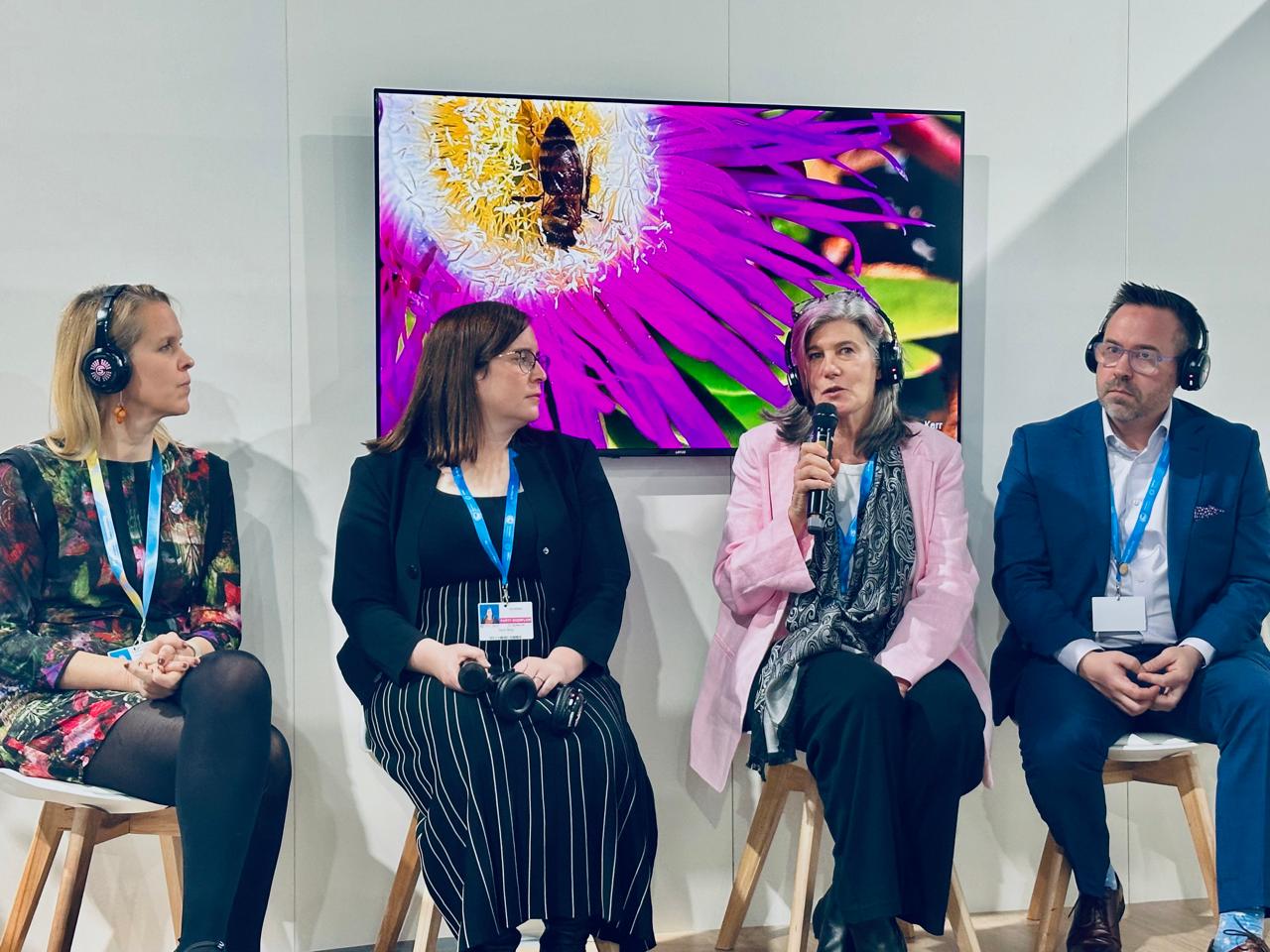PAMSA event at South African COP 29 Pavillion sees ICFPA members share how sustainably managed forestry are nature positive in action
On 19 November 2024, the COP 29 side event titled Nature Positive in Action captivated a small but diverse audience at the South African Pavillion by shining a spotlight on the transformative role sustainably managed forests play in the global bioeconomy with a particular focus on biodiversity.
The session brought together global experts to explore how innovative approaches in forest management are advancing climate action, biodiversity conservation, and socio-economic development. The sector has long fought for a recognition as a key player in addressing global challenges, from climate change to poverty alleviation, while fostering biodiversity and economic growth.
The presenters collectively emphasised that achieving a nature-positive economy requires science-based approaches to forest stewardship, robust financial systems, and inclusive partnerships.
The Nature Positive in Action side event served as a call to action for governments, industries, and communities to collaborate and invest in the future of forests—ensuring a thriving planet for generations to come.
Facilitated by Ross Hampton, Executive Director of the International Sustainable Forestry Coalition, presenters shared global case studies and insights on harnessing the power of forestry to create a nature-positive future. With contributions from South Africa, Australia, and Canada, the session demonstrated the immense potential of the sector to balance environmental, economic, and social imperatives at both a national and global level.
Representing South Africa, Jane Molony, Executive Director of the Paper Manufacturers Association of South Africa, illustrated the positive impacts of planted forests and harvested wood products on biodiversity stewardship and community upliftment. Her case studies demonstrated how South Africa’s forestry sector creates employment opportunities and enhances livelihoods, particularly in rural areas.
Jane touched on an interesting initiative that illustrated the power of partnerships between corporates and rural communities. “Approximately 80% of Africa’s population relies on traditional medicine for their essential health needs, sometimes to the detriments of various species, such as trees that are subject to excessive harvesting for medicinal purposes. Through the Sappi Rare, Threatened, and Endangered Species Stewardship Programme and successful collaboration, the critically endangered Warburgia salutaris (Pepperbark tree) has been saved from the brink of extinction. Warburgia trees are propagated, using Sappi’s tree breeding expertise. These trees are then distributed to communities (pictured below) living around the Kruger National Park to take the pressure off the few remaining wild trees.

Molony quoted South Africa’s Minister of Forestry, Fisheries and the Environment, Dr Dion George: “We are shaping a future in which environmental stewardship and socio-economic development are harmoniously integrated.”

Dr Amy Duchelle of the FAO Forestry Division began the discussion by presenting key findings from The State of the World’s Forests 2024. Drawing on her extensive work with CIFOR’s Global Comparative Study on REDD+, Dr Duchelle highlighted the critical importance of halting and reversing deforestation by 2030. She underscored how innovative forestry sector practices are crucial in promoting sustainable forest use while enhancing the rights and livelihoods of local communities.
Eric Johnson, Vice President of the Forest Products Association of Canada, shared compelling examples of climate-smart forestry initiatives from Canada. He discussed how the sector is not only enhancing carbon sequestration and biodiversity but also mitigating wildfire risks. Johnson emphasised the critical role of forestry in building a nature-positive economy through strategic partnerships and innovative practices.
Sara Bray, Senior Policy Manager of the Australian Forest Products Association, provided insights into Australia’s efforts to integrate forestry into the nation’s climate and biodiversity strategies. Through case studies, she showcased how government policies are driving investment in the forestry sector to achieve net-zero goals. Bray called for expanded support to unlock the sector’s full potential for a nature-positive Australia.





